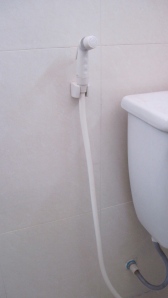Two friends joined us on our recent trip to Hawaii. We're all under-employed, we've all known each other for some time, and when we started talking Hawaii, one of them had this to say: If I don't get a beach vacation soon, I'm going to have to kill someone. (The someone was very specific, and he did make himself available for the beach vacation, saving everyone from character references and prison time and claims of insanity. A-hem, I digress, as usual.) I've traveled with one of these friends before; we had a great time on a weekend up in Vancouver, Canada, so I was fairly confident that we could all travel together. And apart from some picky eating issues and a minor airport meltdown,things worked out swimmingly.
Traveling with friends is tricky, I've had it go very badly when all signs pointed to it going perfectly, I've had it go perfectly when my sense was that it wasn't going to work. I've traveled with friends in Alaska and Costa Rica and Spain and Washington State and Vietnam. The destination doesn't determine if it's going to work, only the chemistry does. And planning, good planning. Here are a few posts with great advice about how to travel with friends.
Wet Noodle Posse posts on traveling with your gal pals.
Before you head to the airport or get in the car for your girls’ weekend, establish how you’ll handle meals. How many meals will you eat in your rental? How many dinners out? Will you split the grocery bill, or should everyone get their own food? Who’s going to the grocery store when you arrive and what’s on that list? My friends and I usually shop together and split the bill. I bring a few things necessary to my existence that I don’t expect them to chip in for, but I am happy to share—coffee. I like to grind my own dark roast beans. Communication is important—especially if some friends have to watch their pennies more than others.
Travel Muse has a great post on how to "Stay Sane While Traveling With Friends" that includes this piece of advice and more:
Plan alone time. Even though you’re traveling with people you like, everyone needs some time to themselves to decompress from the group. Make sure you plan for alone time on a daily basis.
I also liked this post on Divine Caroline:
Take a trial trip.A short-term practice round such as a weekend road trip might help you recognize whether you’ll be compatible travel partners. Spending time together without your everyday concerns and comforts will give you a chance to see how patient and compatible you are with each other. You may discover whether or not your prospective partner is able to get through trip delays and brief misunderstandings without getting distressed. Though temporarily stressful, those are the situations that can usually make the best stories.
On our trip, we did really well when we had clear goals for the day and a schedule to follow. We also allowed for days when we split up and did things separately -- one day we got an extra car, one day the husband and I stayed in while our friends took off for the better part of the day. A few times we had a late start -- we're early people, our pals get going late -- but we were able to take everything in stride. I'd say the most difficult thing we had to deal with was our vegan pal, but it was very clear that it was about him, not about us, and it would not have been a big deal if we'd abandoned him to go eat on our own -- we agreed upon that early on. We worked out our budget and our accommodation needs before hand, so there was no tension around too expensive or not enough bathrooms.
Read more of Pam's Travel with Friends at http://www.blogher.com/traveling-friends











